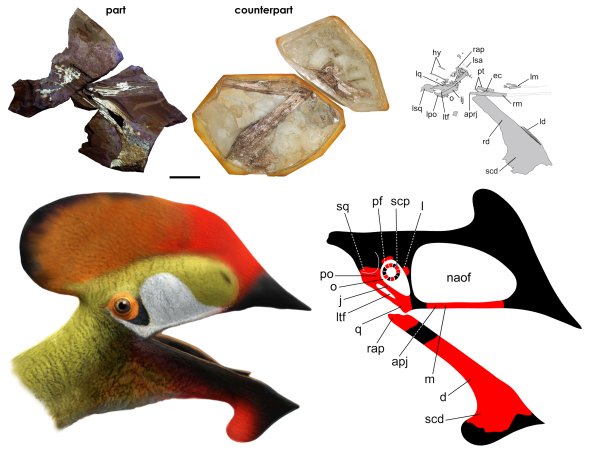 |
| Red represent found bones |
Previously only known from sites in Gondwana, this discovery suggests a major early Cretaceous world-wide radiation of this pterosaur family. Ecologically this is important because tapejarids are most often interpreted as toucan analogues- frugivores. And the distribution of tapejarids in time and space closely parallels the distribution of radiating flowering plants- i.e. fruit. It now seems that this family of pterosaurs can be included alongside various insect, mammal, bird, and reptile families as part of the Cretaceous Terrestrial Revolution (KTR). The KTR represents a suite of families that, through coevolution with flowering plants, more or less gave rise to a "modern" world ecosystem. By eating the fruits/seeds of primitive flowering plants tapejarids distributed these plants and thus were architects of the modern world.
 |
| Illustration by Author. Here I have Europejara snapping up a fruit (hypothetical avocado type fruit) mid-flight. I don't know if tapejarids would have plucked fruit in midair like this- but why not? |
References
Vullo R, Marugán-Lobón J, Kellner AWA, Buscalioni AD, Gomez B, et al. (2012) A New Crested Pterosaur from the Early Cretaceous of Spain: The First European Tapejarid (Pterodactyloidea: Azhdarchoidea). PLoS ONE 7(7): e38900. doi:10.1371/journal.pone.0038900
Support me on Patreon.
Like antediluvian salad on facebook.
Watch me on Deviantart @NashD1.Subscribe to my youtube channel Duane Nash.
My other blog southlandbeaver.blogspot.

No comments:
Post a Comment